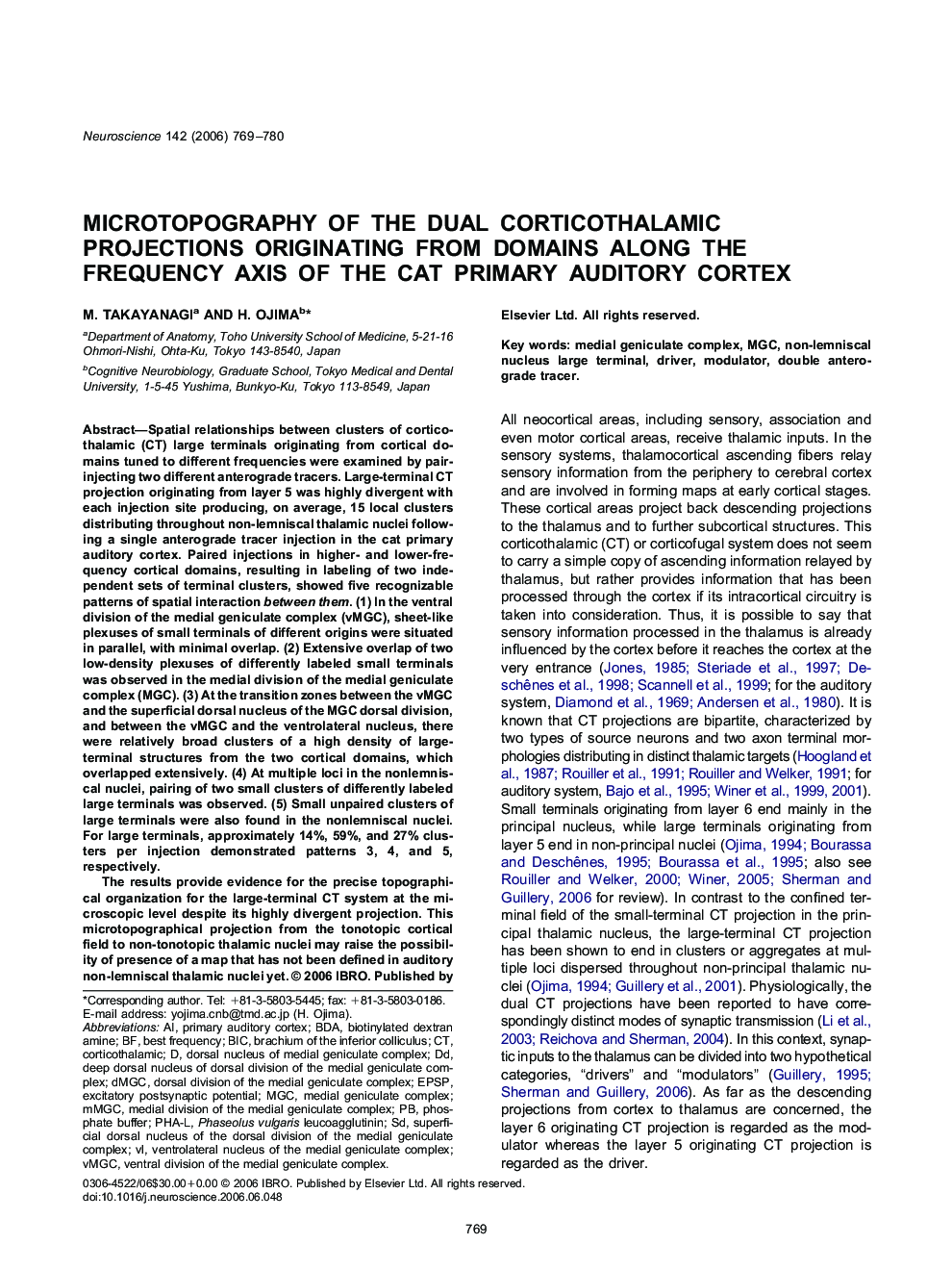| Article ID | Journal | Published Year | Pages | File Type |
|---|---|---|---|---|
| 4341959 | Neuroscience | 2006 | 12 Pages |
Spatial relationships between clusters of corticothalamic (CT) large terminals originating from cortical domains tuned to different frequencies were examined by pair-injecting two different anterograde tracers. Large-terminal CT projection originating from layer 5 was highly divergent with each injection site producing, on average, 15 local clusters distributing throughout non-lemniscal thalamic nuclei following a single anterograde tracer injection in the cat primary auditory cortex. Paired injections in higher- and lower-frequency cortical domains, resulting in labeling of two independent sets of terminal clusters, showed five recognizable patterns of spatial interaction between them. (1) In the ventral division of the medial geniculate complex (vMGC), sheet-like plexuses of small terminals of different origins were situated in parallel, with minimal overlap. (2) Extensive overlap of two low-density plexuses of differently labeled small terminals was observed in the medial division of the medial geniculate complex (MGC). (3) At the transition zones between the vMGC and the superficial dorsal nucleus of the MGC dorsal division, and between the vMGC and the ventrolateral nucleus, there were relatively broad clusters of a high density of large-terminal structures from the two cortical domains, which overlapped extensively. (4) At multiple loci in the nonlemniscal nuclei, pairing of two small clusters of differently labeled large terminals was observed. (5) Small unpaired clusters of large terminals were also found in the nonlemniscal nuclei. For large terminals, approximately 14%, 59%, and 27% clusters per injection demonstrated patterns 3, 4, and 5, respectively.The results provide evidence for the precise topographical organization for the large-terminal CT system at the microscopic level despite its highly divergent projection. This microtopographical projection from the tonotopic cortical field to non-tonotopic thalamic nuclei may raise the possibility of presence of a map that has not been defined in auditory non-lemniscal thalamic nuclei yet.
